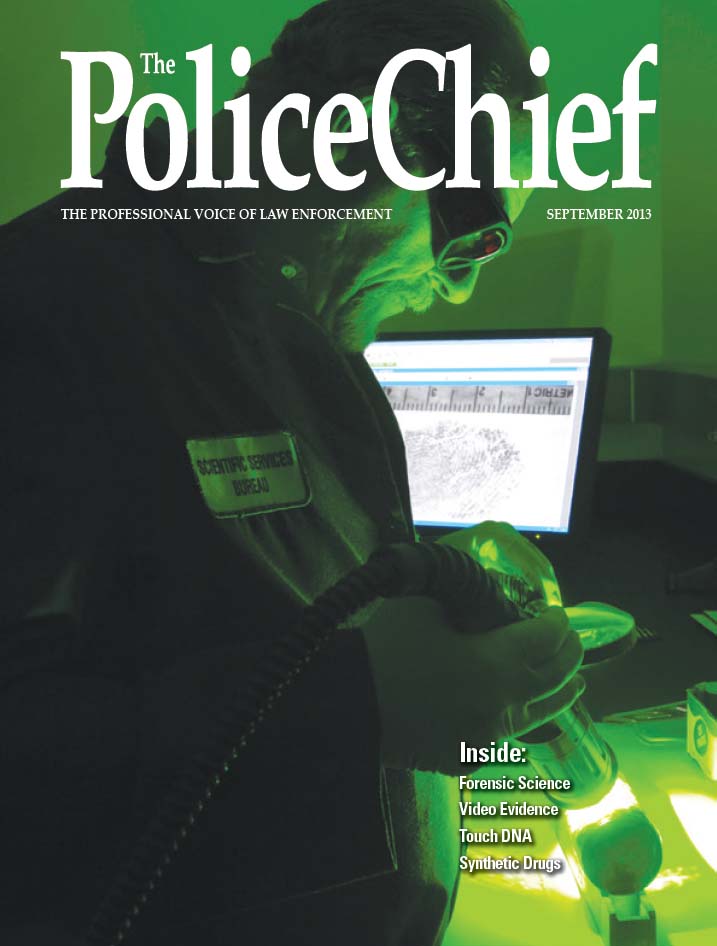
September 2013
The use of forensic evidence in criminal investigations has undergone many changes since 1907 when August Vollmer had a biologist analyze blood, fibers, and soil in a murder case. Forensics — the scientific analysis of physical evidence for prosecution or exoneration of individuals in criminal cases — has seen great advances such as the investigation of computer crimes using digital forensics and DNA analysis. DNA evidence has revolutionized criminal investigations and adjudications in attaining exonerations and convictions — providing evidence of identity, with near certainty.
Cover image Courtesy of the Los Angeles County Sheriff’s Department, Scientific Services Bureau, Photo-Digital Imaging Section.
Articles
-
Product Feature: Forensics and Investigation Tools Flourish in the Field
Make it fast. Make it inexpensive. Keep it simple. Those three tenets are driving much of the innovation around investigation and forensics tools. Given dwindling budgets and capabilities in agenci... -
The Changing Face of Forensic Science: What Police Chiefs Need to Know about National Forensic Science Initiatives
Since the introduction of modern sciences into law enforcement in the late 1920s with what is called today “crime labs,” a tremendous revolution in the application of technology to fight and preve... -
Are You Running a Quality Forensic Science Operation? What Chiefs Need to Know about QA and Accreditation
Why do forensic service providers need a quality assurance program? What is a quality assurance program? If an agency does not have a crime laboratory, why worry about it? First and foremost, law e... -
Rethinking the Ownership of Crime Labs: No Matter Who Is in Charge, Jurisdictional Commitment Is Key
It is doubtful that any police chief would agree to run a hospital or an engineering firm. Hospitals and engineering firms are not police business, and they require skill sets and value systems unique... -
Video Evidence Is Everywhere: Training and Respect Are Needed
A popular refrain from comedian Rodney Dangerfield is “I don’t get no respect.” Rodney made millions laugh at his never-ending examples of trying to gain acceptance and well…respect. In the... -
Communication, Context, and Crime Scenes: Enhancing Opportunities to Identify and Collect Touch DNA Evidence
Advances in DNA technology over the last decade require police departments to take a new approach to how potentially critical evidence at a crime scene is located and identified. Cellular DNA, or “t... -
No Rape Case Goes Unanalyzed: A Rapid Approach to Sexual Assault Evidence
In many cases of sexual assault, crime laboratories have generally lacked the resources needed to use forensic DNA within the short response time that is most beneficial to a criminal investigation. T... -
The Synthetic Drug Craze: What Chiefs Need to Know
In the last five years, a new wave of designer drugs has flooded the United States. Usually marketed as “legal highs,” these compounds have become one of the latest challenges facing the criminal ...
Columns
- President's Message: IACP Constitutional Review: Time to Make Your Voice Heard
- Legislative Alert: IACP Meets with Vice President Biden on Immigration Reform
- Officer Safety Corner: Compassion in Law Enforcement
- Research in Brief: Eyewitness Identifications: A National Survey on Procedures
- Chief' Counsel: Maryland v. King—The Constitutionality of DNA Collection for Law Enforcement Purposes

